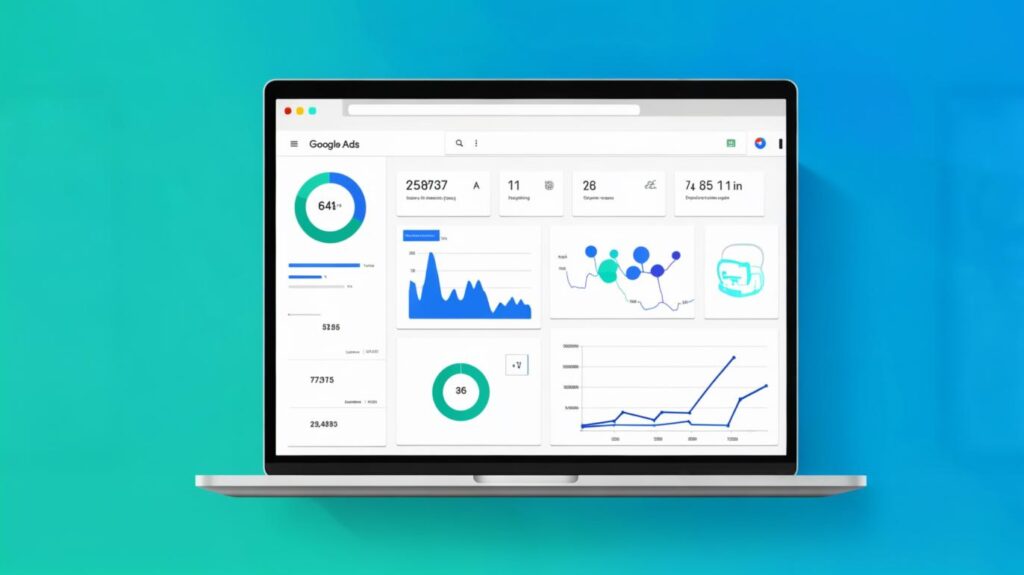Table of Contents
Introduction
In today’s digital landscape, online advertising is a crucial tool for businesses looking to expand their reach, increase brand awareness, and drive sales. Google Ads, the world’s leading online advertising platform, offers unparalleled opportunities for businesses to target their audience effectively. This comprehensive guide will delve into the intricacies of Google Ads, covering everything from setting up an account to optimizing campaigns for maximum returns.

Understanding Google Ads
What is Google Ads?
Google Ads, formerly known as Google AdWords, is an online advertising platform developed by Google. It allows businesses to display advertisements on Google’s search engine results pages (SERPs), YouTube, and across the Google Display Network. Advertisers bid on keywords to have their ads appear when users search for relevant terms.
How Does Google Ads Work?
Google Ads operates on a pay-per-click (PPC) model, meaning advertisers pay a fee each time their ad is clicked. The platform uses an auction system where advertisers compete for ad placements based on bid amount, ad relevance, and quality score.
Key Benefits of Google Ads
- Targeted Advertising: Reach users based on demographics, location, interests, and search behavior.
- Measurable Performance: Track and analyze campaign performance with real-time data.
- Cost Control: Set daily budgets and bid strategies to manage costs effectively.
- Increased Visibility: Gain prominent exposure on Google’s search results and partner sites.
- Fast Results: Unlike SEO, which takes time, Google Ads can provide immediate traffic.
- Scalability: Suitable for small startups to large enterprises with flexible budgets.
Setting Up a Google Ads Campaign
Step 1: Creating a Google Ads Account
To start advertising with Google Ads, you need to create an account on the platform. Simply visit Google Ads and sign up using your Google account.
Step 2: Choosing the Right Campaign Type
Google Ads offers several campaign types, including:
- Search Campaigns: Text ads that appear on Google’s search results.
- Display Campaigns: Visual banner ads on websites and apps within the Google Display Network.
- Shopping Campaigns: Product listings for e-commerce businesses.
- Video Campaigns: Video ads on YouTube.
- App Campaigns: Promotes mobile applications across various Google properties.
- Performance Max Campaigns: Utilizes automation and machine learning for ad optimization.
Step 3: Defining Campaign Goals
Your campaign goals should align with your business objectives. Common goals include:
- Increasing website traffic
- Generating leads and conversions
- Boosting brand awareness
- Increasing app downloads
- Promoting local store visits
Step 4: Selecting Keywords
Keyword research is a fundamental part of a successful Google Ads campaign. Use tools like Google Keyword Planner to identify high-performing keywords relevant to your business. Consider using:
- Short-tail keywords: Broad terms with high competition (e.g., “shoes”).
- Long-tail keywords: More specific terms with lower competition (e.g., “women’s running shoes under $50”).
- Negative keywords: Terms that are irrelevant to filter out unwanted traffic.

Step 5: Writing Effective Ads
Craft compelling ad copy with a clear call-to-action (CTA). Your ads should include:
- A strong headline
- A persuasive description
- A relevant URL
- Use of ad extensions for additional information
Step 6: Setting Budgets and Bids
Determine how much you are willing to spend daily and set appropriate bidding strategies such as:
- Manual CPC (Cost Per Click): Control individual bid amounts.
- Enhanced CPC: Adjust bids based on the likelihood of conversions.
- Maximize Conversions: Automatically set bids to maximize conversions.
- Target CPA (Cost Per Acquisition): Set a specific amount per conversion.
- Target ROAS (Return on Ad Spend): Adjust bids based on the expected revenue.
Optimizing Google Ads for Better Performance
1. Improving Quality Score
Google assigns a Quality Score based on the relevance of your ads, landing pages, and click-through rates (CTR). A higher Quality Score can lower costs and improve ad placement.
2. Utilizing Ad Extensions
Ad extensions provide additional information and encourage higher engagement. Popular extensions include:
- Sitelink Extensions: Direct users to specific pages.
- Call Extensions: Display a phone number for direct calls.
- Location Extensions: Show business locations on Google Maps.
- Structured Snippets: Highlight product or service categories.
- Callout Extensions: Add extra text to highlight key selling points.
3. A/B Testing Ads
Run multiple versions of an ad to determine which performs best. Test different headlines, descriptions, and CTAs to optimize results.
4. Retargeting Strategies
Retargeting (or remarketing) helps re-engage users who have previously interacted with your website. Google Ads allows businesses to show targeted ads to these users across the web.
5. Monitoring and Adjusting Campaigns
Regularly analyze campaign performance using Google Analytics and Google Ads reports. Adjust bids, refine keywords, and tweak ad copy based on insights.
Advanced Google Ads Strategies
1. Using Smart Bidding
Smart Bidding is an automated bidding strategy that uses machine learning to optimize conversions. Options include:
- Target CPA (Cost Per Acquisition): Adjusts bids to achieve a specific cost per conversion.
- Target ROAS (Return on Ad Spend): Sets bids to maximize revenue based on your target return.
- Maximize Clicks: Focuses on getting the highest number of clicks within a budget.
- Maximize Conversion Value: Optimizes bids based on the highest revenue-generating conversions.
2. Geo-Targeting for Local Businesses
Google Ads allows businesses to target users based on geographic location. Local businesses can leverage geo-targeting to reach customers in specific cities or regions.
3. Leveraging Audience Targeting
Audience targeting enables advertisers to reach users based on their online behavior. Types of audiences include:
- Affinity Audiences: Users with specific interests.
- In-Market Audiences: Users actively researching products/services.
- Custom Intent Audiences: Users based on recent search activity.
- Lookalike Audiences: Target users similar to your existing customers.
4. Dynamic Search Ads (DSAs)
DSAs automatically generate ads based on website content, eliminating the need for manual keyword selection.
5. Competitor Analysis
Analyze competitors’ ads using tools like SEMrush or SpyFu. Identify their keywords, ad copy strategies, and bidding tactics to refine your approach.
Common Mistakes to Avoid in Google Ads
- Ignoring Negative Keywords: Exclude irrelevant searches to prevent wasted ad spend.
- Not Optimizing Landing Pages: Ensure landing pages align with ad messaging and provide a seamless user experience.
- Setting Broad Match Keywords Only: Use phrase and exact match to target specific search intent.
- Neglecting Mobile Optimization: Many users browse on mobile devices, so ads and landing pages should be mobile-friendly.
- Failing to Track Conversions: Set up conversion tracking to measure campaign success accurately.
Conclusion
Google Ads is a powerful advertising platform that, when used correctly, can drive substantial business growth. By understanding campaign setup, optimization techniques, and advanced strategies, businesses can maximize their ROI and achieve digital marketing success. Continuous monitoring, testing, and refinement are key to unlocking the full potential of Google Ads. Whether you’re a small business owner or a large enterprise, leveraging Google Ads effectively can take your online presence to new heights.